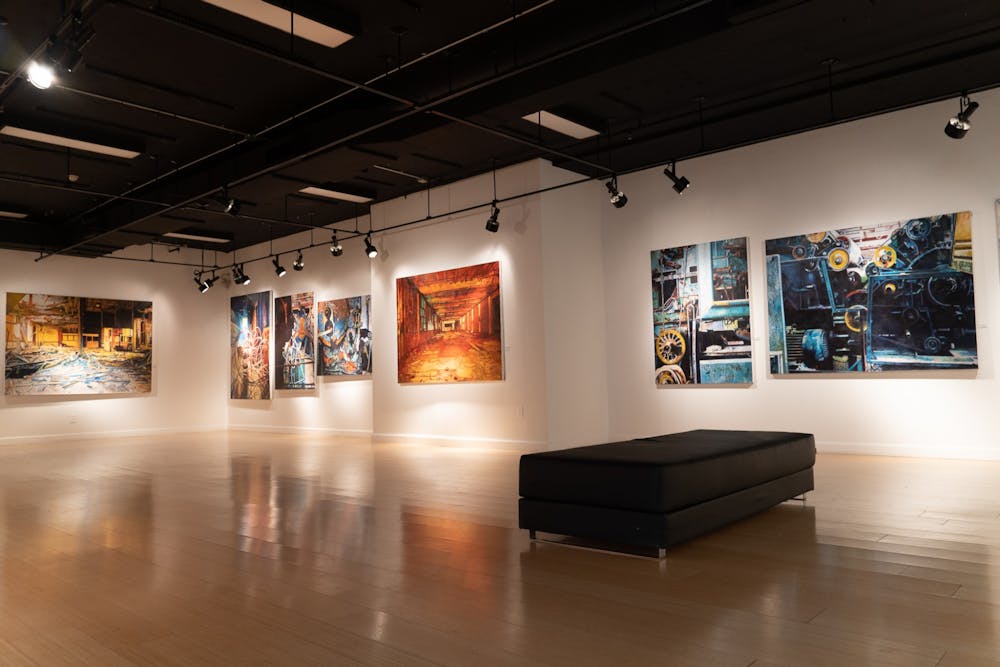The newest exhibit at the McMaster gallery, “Fulmination and the Final Fulfillment" features 18 paintings by artist Morgan Craig and acts as commentary on the impact of capitalism in the world, according to Craig.
The exhibit opened in McMaster Gallery on Jan. 13, but Craig said that he has worked on this project for the better part of two decades. He started during his undergraduate years at the Tyler School of Art at Temple University, he said.
Craig received his Master's degree at the University of the Arts in Philadelphia for Fine Arts in Painting.
He has had exhibits go on display every year since 2004, according to his website. When he is not creating art, he is teaching it at an inner-city school in Philadelphia.
Craig said he has traveled throughout Europe multiple times to gain inspiration for his work. This gallery was inspired by his interest in the industrial heritage of the U.S. and Europe, he said.
Industrial heritage refers to how industry has evolved and changed throughout history. For instance, some factories and buildings that were used almost daily are now either abandoned or being used by the workers instead of the capitalists that ran them.
The exhibit serves as a commentary on Craig's view of capitalism, which he calls a "system that we function under, or that we are ... willing slaves to, currently in, in not only this country but the globe, unfortunately."
The exhibit shows the slow destruction of the past, Olga Yukhno, the director of the McMaster Gallery, said.
The paintings Craig makes are painted in a stylized but realistic manner, using saturated color and intense contrast to depict deserted and abandoned industrial areas. His works blend the history of industrial complexes with the visuals of their currently run-down state to offer viewers perspective on how man-made structures change over time.
A large oil painting, called the “Clinic of Reason,” depicts an abandoned classroom from the 1980s in Chernobyl. Yukhno said this is her favorite piece and that Craig traveled to the area for inspiration.
"I find that, personally, extremely appealing because he manages to find beauty in spaces that most other people probably will not find attractive," Yukhno said.
Craig's works involves more than just painting the architecture of empty ruins. He said he spends days researching different historical sites and looking into the real events that occurred there.
Craig’s work was chosen from over 100 applicants by a committee representing USC's School of Visual Art and Design.
The graduate student service coordinator and coordinator of community programming for the School of Visual Art and Design, Bailey Watts, said the McMaster gallery receives applications from "renowned artists" across the United States.
"They're really stunning all of them. They're really large-scale paintings," Watts said.
Yukhno included that while the exhibit in the McMaster Gallery has only 18 paintings in it, she had 24 different pieces to choose from.
“His work definitely stood out. It's very thought-provoking, definitely visually captivating and it raises very deep and timely questions, so that was a very interesting addition to our schedule that we really wanted to make sure we took advantage of,” Yukhno said.
The School of Visual Arts and design has two student assistants that work with Yukhno to design the layout of the gallery.
"Under Olga's supervision, the two students work and determine what artworks will go where; they set up studio lighting to frame the pieces," Watts said.
Craig will be visiting USC's Columbia campus in mid-February, where he will give a lecture to students and lead an artist workshop, according to Yukhno.

